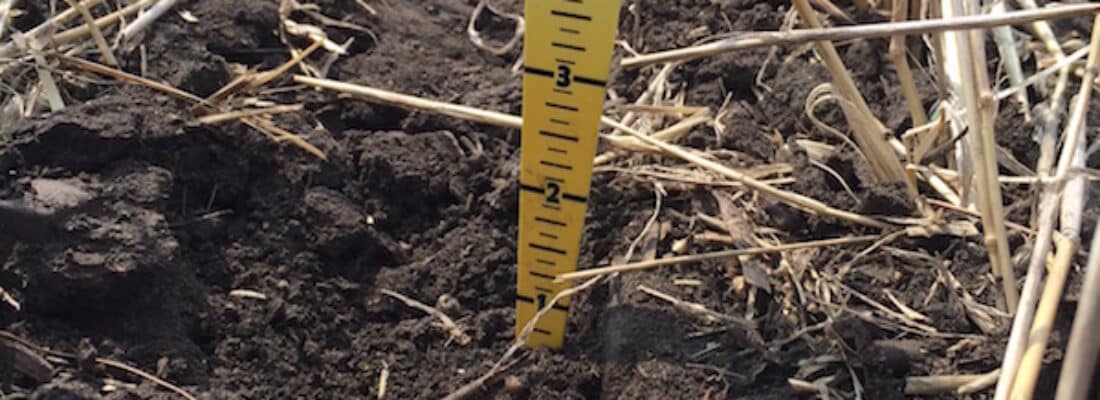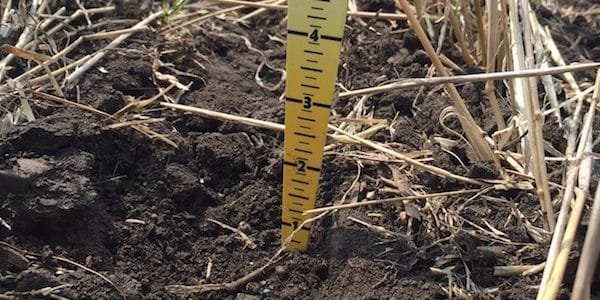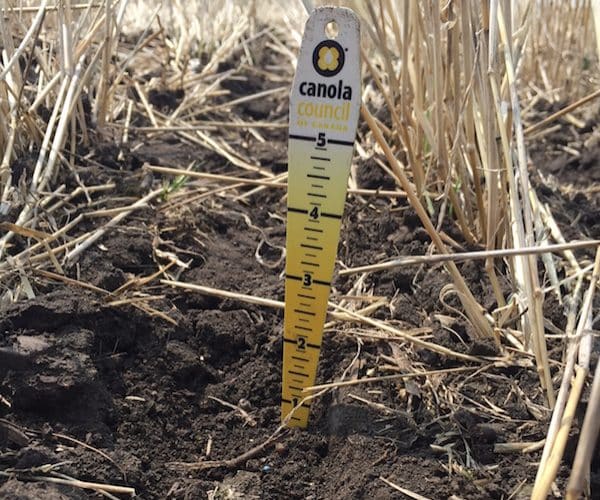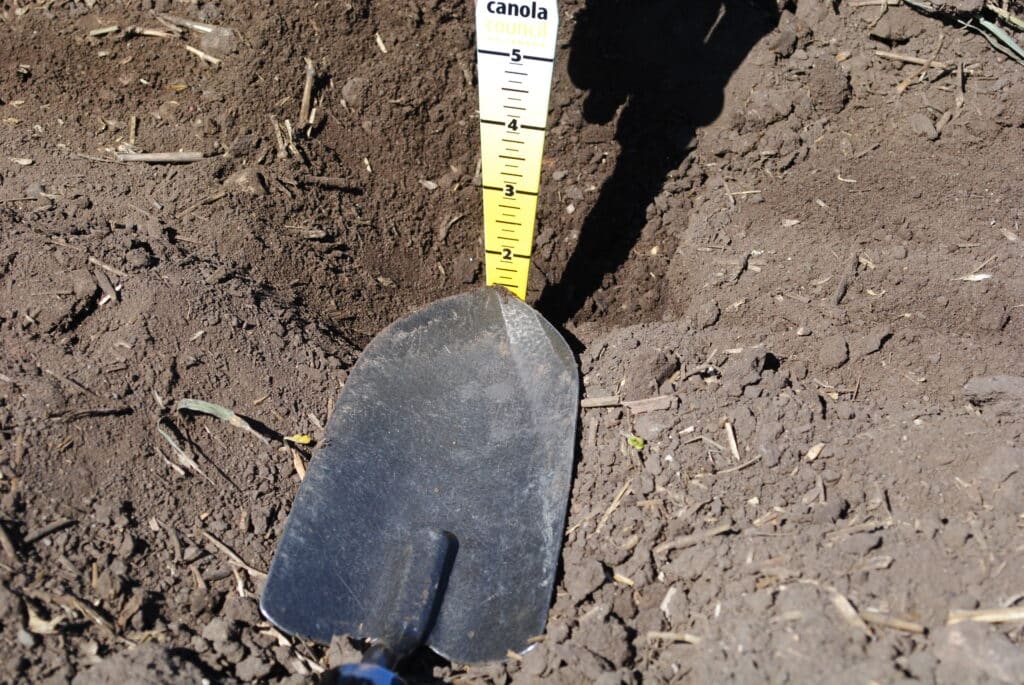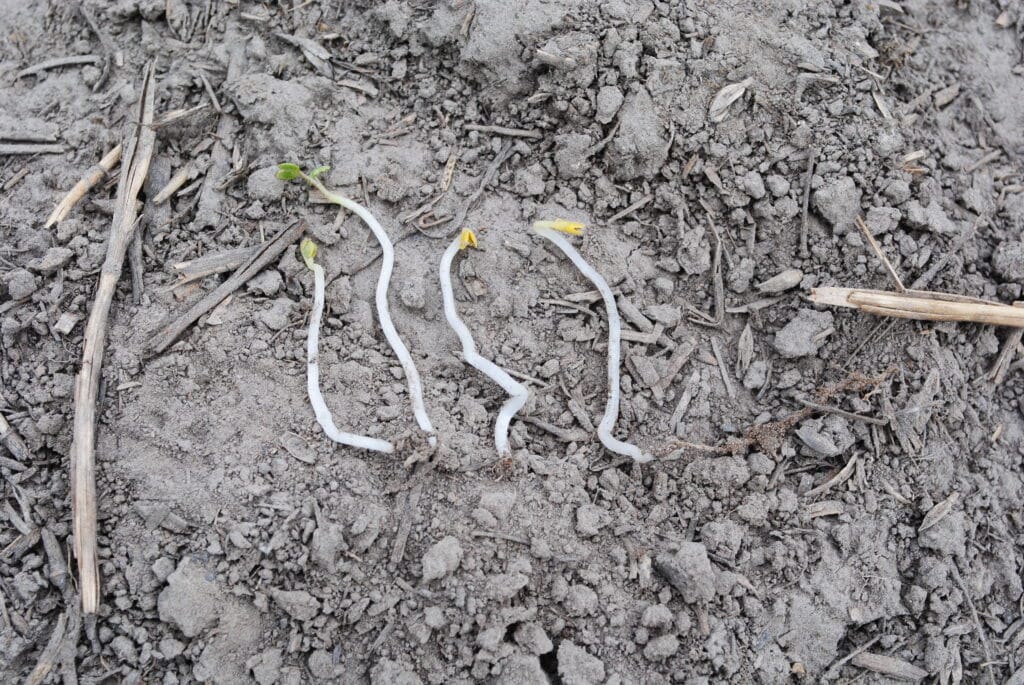Canola is a much smaller seed than many other common crops planted in western Canada, which makes seedbed considerations, such as seeding depth, especially important. Other seedbed factors, such as moisture levels, available equipment and crop residue are just a few consideration around this important plant establishment option.
Important tips for best management
- Canola seed placed in the soil at a depth of 1.25 centimetres to 2.5 centimetres (half an inch to one inch)
- This depth can improve seed survival, plant density and weed competition when compared to seed placed at depths less than or greater than that target.
- Rapid emergence that results from ideal seed depth can also decrease days to flowering and maturity, which can reduce green seed risk at harvest.
- Learn about seeding depth as a factor for Equipment Management and Environmental Effects.
Seed depth considerations
An Agriculture and Agri-Food CanadaAgriculture and Agri-Food Canada is a department of the Government of Canada. More study compared canola seeding depths of one and four centimetres. It concluded that, under moist conditions, average canola emergence improved from 37 per cent at four cm seed depth to 62 per cent at one centimetres. The study also concluded that canola seed placed at one cm emerged faster and had decreased days to flowering and days to maturity. Deeply sown seeds require several days longer to emerge and have reduced survival rates due to the insufficient stored energy in canola required to push cotyledons to the surface1.
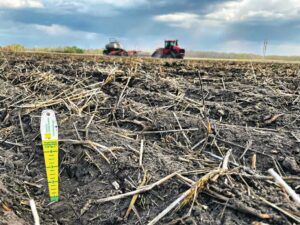
Uniform seed depth is also important as this will help canola plants to emerge at about the same time. Uniform placement often comes down to the seeding tool. Proper set up of the seeding tool is described in the Equipment Management section of the Plant Establishment chapter. Reducing seeding variability with planters was investigated with Murray Hartman and Neil Harker in the ‘Aim for consistent seed depth’ Canola Digest: Science Edition article.
Seed depth in dry soil. In fields where the top 2.5 centimetres is too dry to allow for uniform germination and emergence, a slight increase in seed depth to hit moisture can speed up seed germination and crop establishment. Seeding as deep as four centimetres (one and half inches) to put seed on or in moisture might improve emergence if soils are also warm and there’s no rain in the immediate forecast. If considering deeper seeding, spend extra time checking placement both across the drill and in several adjacent rows to make sure that all openers are seeding at the intended depth.
Footnotes
- Harker, K. N., O’Donovan, J. T., Blackshaw, R. E., Johnson, E. N., Lafond, G. P. & May, W. E. 2012. Seeding depth and seeding speed effects on no-till canola emergence, maturity, yield and seed quality. Can. J. Plant Sci., 92, 795–802. https://doi.org/10.4141/cjps2011-189[↩]
